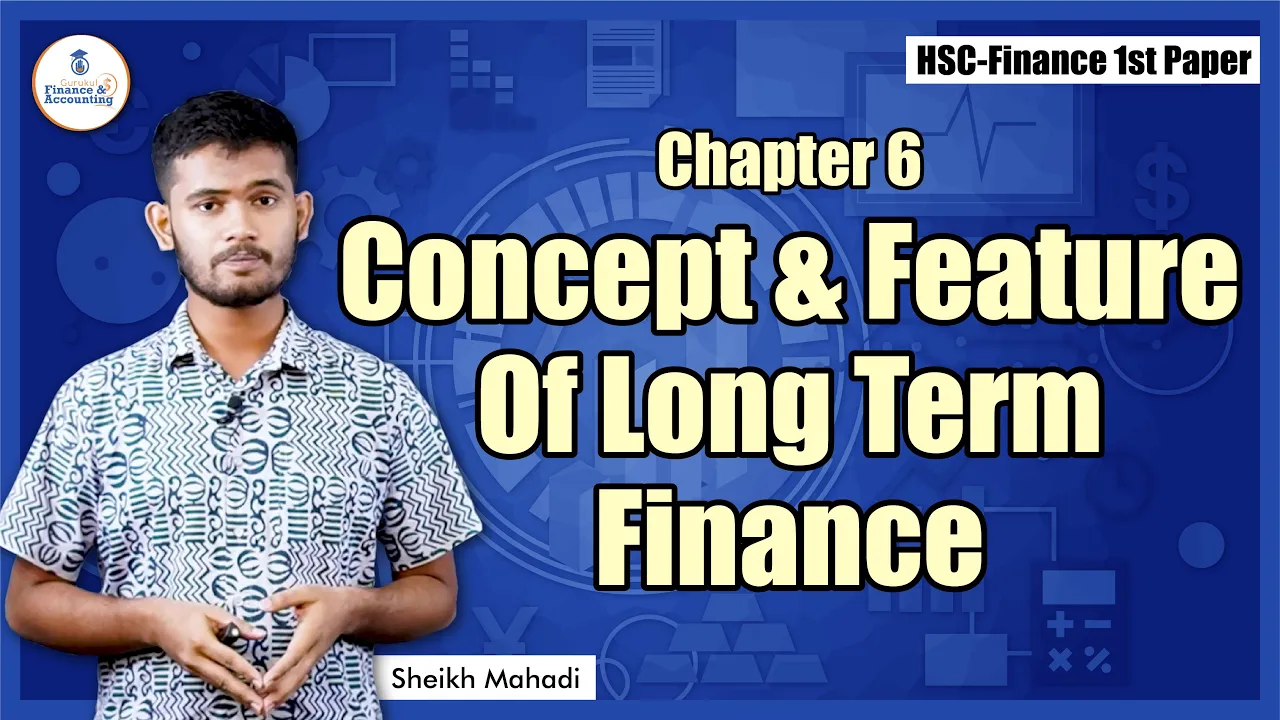Concept And Feature Of Long Term Finance class is for the HSC candidates or for the students of classes 11 and 12. This class is a part of HSC (11-12) [ এইচএসসি (১১-১২) ], Finance and Banking 1st paper. You can find it in the Finance 1st Paper, chapter 6, the topic name is “Concept And Feature Of Long Term Finance”. This class will help you in your upcoming HSC examination.
Concept And Feature Of Long Term Finance
Definition
Long-term finance can be defined as any financial instrument with maturity exceeding one year (such as bank loans, bonds, leasing and other forms of debt finance), and public and private equity instruments. Maturity refers to the length of time between origination of a financial claim (loan, bond, or other financial instrument) and the final payment date, at which point the remaining principal and interest are due to be paid.
Equity, which has no final repayment date of a principal, can be seen as an instrument with nonfinite maturity. The one year cut-off maturity corresponds to the definition of fixed investment in national accounts. The Group of 20, by comparison, uses a maturity of five years more adapted to investment horizons in financial markets (G-20 2013). Depending on data availability and the focus, the report uses one of these two definitions to characterize the extent of long-term finance.

Moreover, because there is no consensus on the precise definition of long-term finance, wherever possible, rather than use a specific definition of long-term finance, the report provides granular data showing as many maturity buckets and comparisons as possible.
Importance of long-term finance
Extending the maturity structure of finance is often considered to be at the core of sustainable financial development. Long-term finance contributes to faster growth, greater welfare, shared prosperity, and enduring stability in two important ways: by reducing rollover risks for borrowers, thereby lengthening the horizon of investments and improving performance, and by increasing the availability of long-term financial instruments, thereby allowing households and firms to address their life-cycle challenges (Demirgüç-Kunt and Maksimovic 1998, 1999; Caprio and Demirgüç-Kunt 1998; de la Torre, Ize, and Schmukler, 2012).
The term of the financing reflects the risk-sharing contract between providers and users of finance. Long-term finance shifts risk to the providers because they have to bear the fluctuations in the probability of default and other changing conditions in financial markets, such as interest rate risk. Often providers require a premium as part of the compensation for the higher risk this type of financing implies. On the other hand, short-term finance shifts risk to users as it forces them to roll over financing constantly.

The amount of long-term finance that is optimal for the economy as a whole is not clear. In well-functioning markets, borrowers and lenders will enter short- or long-term contracts depending on their financing needs and how they agree to share the risk involved at different maturities.
What matters for the economic efficiency of the financing arrangements is that borrowers have access to financial instruments that allow them to match the time horizons of their investment opportunities with the time horizons of their financing, conditional on economic risks and volatility in the economy (for which long-term financing may provide a partial insurance mechanism). At the same time, savers would need to be compensated for the extra risk they might take.
Where it exists, the bulk of long-term finance is provided by banks; use of equity, including private equity, is limited for firms of all sizes. As financial systems develop, the maturity of external finance also lengthens. Banks’ share of lending that is long term increases with a country’s income and the development of banking, capital markets, and institutional investors.
Long-term finance for firms through issuances of equity, bonds, and syndicated loans has also grown significantly over the past decades, but only very few large firms access long-term finance through equity or bond markets. The promotion of nonbank intermediaries (pension funds and mutual funds) in developing countries such as Chile has not always guaranteed an increased demand for long-term assets (Opazo, Raddatz and Schmukler, 2015; Stewart, 2014).

Concept And Feature Of Long Term Finance details:
See more:
